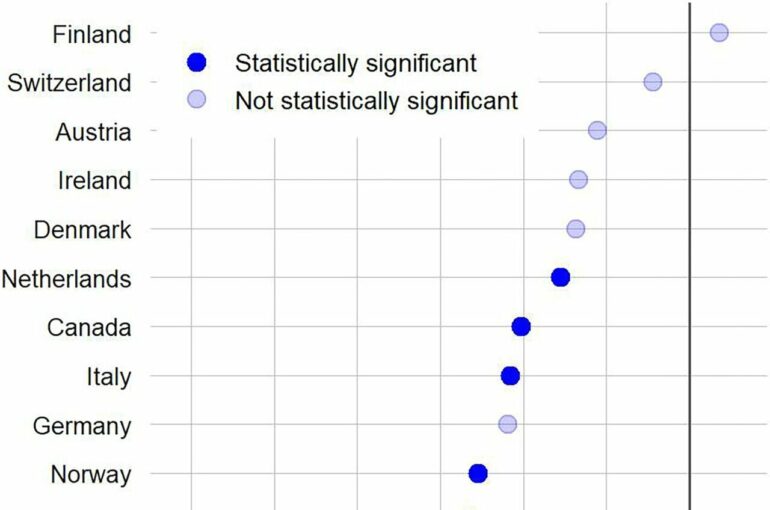New research finds a high variation between how pandemic mitigation measures affected immigration to different destination countries, from a slight increase to huge reductions.
The overarching impact of the COVID-19 pandemic on the global population is undeniable. Many studies have covered its effects on life expectancy and fertility, however, its effect on international migration is less clear. Border closures, lockdowns, and other mobility restrictions have likely had a negative impact on international migration—but how significant it was across countries remains a question.
In a new IIASA-led study published in PLOS ONE, researchers quantified the impact of COVID-19 on immigration flows in 15 high-income countries during 2020. They used statistical modeling to forecast immigration counts in the absence of COVID-19 and compared these to the actual immigration counts.
The study analyzed immigration changes in 12 European countries (Austria, Denmark, Finland, France, Germany, Ireland, Italy, Norway, Spain, Sweden, Switzerland, and The Netherlands), as well as Australia, Canada, and the United States. They then explored how each potential driving force, such as travel restrictions, mobility restrictions, lockdowns, work and school closures, and increases in unemployment might have affected immigration counts.
“A few studies speculated about the mechanisms of how the pandemic may have impacted migration or how travel disruptions may have affected migrants’ plans,” says Miguel González-Leonardo, the lead author of the study and a researcher in the IIASA Population and Just Societies Program. “However, this is the first empirical paper providing evidence of how the pandemic impacted immigration across countries and exploring the underpinning potential driving forces of these changes, such as travel restrictions and other stringency measures.”
The researchers found that immigration declined in all countries, except Finland. The extent of the decline varied greatly between countries, with Australia showing the largest drop in immigration with a 59.9% decrease. Spain and Sweden recorded drops of 45.4% and 36.4% respectively, while immigration decreased by between 15% and 30% in seven other countries, and by less than 15% in four nations where results were not statistically significant.
The researchers found that international travel restrictions, mobility restrictions, and stay-at-home requirements were associated with immigration declines, while work and school closures and unemployment showed no effect.
“Immigration helps to prevent or mitigate depopulation and brings labor force and skills to where they are needed. Thus, understanding changes in the global network of international migration is essential to ensure appropriate policies in aging societies,” concludes Michaela Potančoková, study coauthor and a researcher in the IIASA Population and Just Societies Program.
More information:
Miguel González-Leonardo et al, Quantifying the impact of COVID-19 on immigration in receiving high-income countries, PLOS ONE (2023). DOI: 10.1371/journal.pone.0280324
Provided by
International Institute for Applied Systems Analysis (IIASA)
Citation:
Quantifying COVID-19 pandemic’s impact on immigration (2023, January 24)



